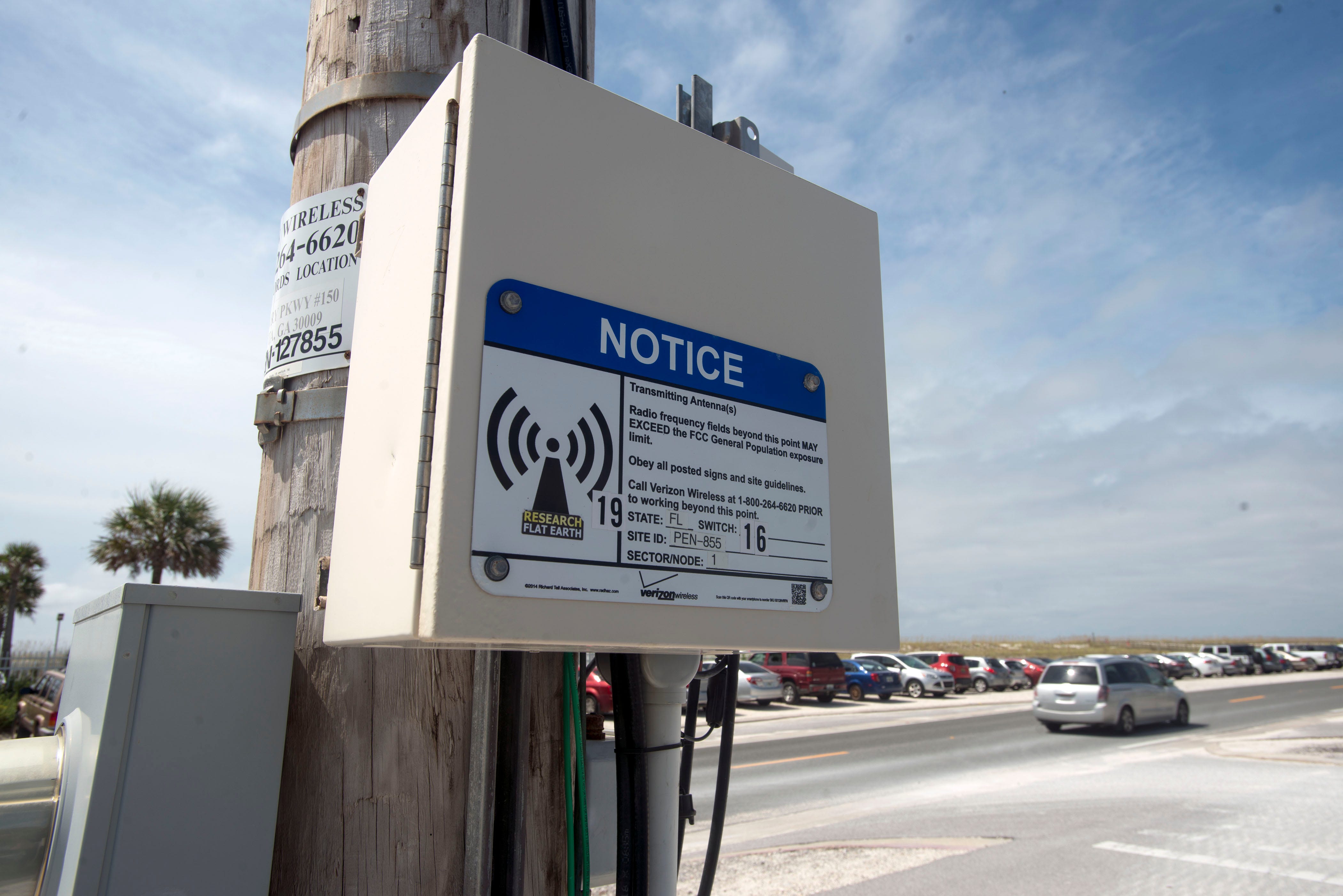What is the safest distance coming from a 5G cell Structure?

If you've ever wandered through a town and spotted tiny mini 5G cell towers placed on poles for street lighting. They look like little boxes, but they're actually broadcasting wireless signals from cellular providers to your mobile.
They are replacing the larger specially-designed cell towers. While they're less noticeable but they can still cause problems for people.
It is the of the FCC's Radiation Exposure Thresholds
The FCC's Radiation Exposure Thresholds define the maximum amount of time a person can be exposed to electromagnetic radiation from wireless devices. The exposure limits are based on research that show that RF energy could cause harm to health.
The specific absorption rate (SAR) is an indicator of the amount of radiofrequency energy that is absorbed by tissue. It's usually 1.6 milliwatts per kilogram averaged over one gram of tissue.
Since 5g is able to transmit at higher frequencies and has the potential to cause greater energy intensity on the skin as well as other body areas. This can result in a wide range of possible harms, such as an increase in appearance of skin disorders like dermatitis, skin cancer and cataracts.
Due to the potential for severe effects of 5g radiation, PSU has chosen to set a general localized power density limit of 4 mW/cm2 averaged on 1cm2, and never to exceed 30 minutes, for all 5G services at 3000 GHz. This limit for localization is in line with the highest spatial-average SAR of 1.6 W/kg, averaged over one g of tissue at 6 GHz.
The FCC's Maximum Exposure Thresholds
In the event that you've used mobile phone, you're probably aware that the safest distance from the tower is around 400 meters away. This is because the power of transmission from a cell tower increases dramatically the farther you are from it.
While https://fnote.me/notes/4M7dpG sounds like a good idea but the truth is that people who live close to towers might be more prone to health problems. For instance, a 2014 study in India found that residents who lived within 50m of cell towers had much more health problems than those living further distance from them.
This study found that people who moved to areas that were further from the cell towers saw their symptoms return to normal within a few days. Other studies have revealed that exposure to high amounts of electromagnetic field radiofrequency (EMFs) can cause cancer, brain tumors as well as other health issues.

This is because the RF radiation used in wireless communication can penetrate the human body's outer layer, called the skin. It is crucial to know because the skin serves as a barrier to protect against mechanical injury, infection caused by pathogenic microorganisms and the entry of harmful substances. Additionally, it is the largest organ of the human body and is accountable for maintaining the integrity of other organs.
The FCC's Minimum Exposure Thresholds for the Minimum Exposure
The FCC's Minimum Exposition Thresholds are based upon numerous assumptions that are not supported by scientific evidence. They include the incorrect belief that short-term exposures RF radiation is safe because of the minimal penetration into the body (i.e., tissue heating).
The assumption also ignores the more extensive penetration of ELF elements of modulated radio signals, as well as the consequences on the body of short bursts generated by RF waves that are pulsed. These assumptions do not correspond with current understanding of the biological effects of RF radiation, and thus they shouldn't be used for health protective exposure standards.
Additionally to that, ICNIRP and FCC are limiting its maximum levels of radiation exposure for local peak SARs that are based on the maximum frequency of absorption (psSAR), which can be described as an inadequate dosimetric tool for determining the level of exposure to radiofrequency radiation. Particularly what is a safe distance from a cell tower is not accurate for frequencies above 6 GHz. In addition, psSAR is not been evaluated for RF radiation exposed to other agents of the environment such as sunlight. In the event of interactions, RF radiation and other environmental agents may result in antagonistic or synergistic impacts. This could result in the risk of having adverse health adverse effects. For what is safe distance from 5g tower , exposure to RF radiation and sunlight could cause an increase in the incidence of skin cancer and exacerbate other skin disorders, such as acne.
